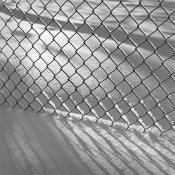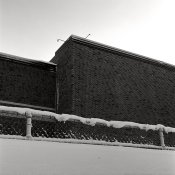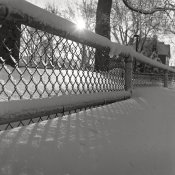Thomas Bertilsson
Member
This is just a post in praise of Kodak D76 and Ilford HP5+.
For as long as I can remember, I have avoided D76 because I naively thought that it was a developer that wasn't 'good enough' for me, for the lack of better words. I have used lots of film developers over the course of the last two decades, including Rodinal, Ilfotec DD-X, HC-110, Edwal 12, Xtol, Perceptol, Pyrocat-HD, Pyrocat-MC, PMK Pyro, FA-1027 (Formulary), Paterson FX-39, Crawley FX-37 (thanks, Clay), Ansco 130 (yes, you read it right), and a host of others I'm neglecting to recall. They were all interesting and had wonderful qualities, and I don't regret using them. But in the last five years or so, I have increasingly seeking simplicity, so I have worked with one developer almost exclusively, replenished Xtol, and that has been a fine companion. But I wanted an even simpler photography life, so I thought that I should use what I have always thought of as 'sub par' to prove to myself that I didn't need anything fancy in order to make good negatives.
And, here I am, after about three gallon packs of D76, having used it in two different ways, both as a 2-bath using stock solution for about 70% of normal developing time + 3 minutes sodium metaborate solution, and otherwise (mostly) 1+1, the latter I have now standardized on.
Lo and behold, I am getting negatives that are just as easy to print, with print quality that is as good as any other developer I have used.
It does almost nothing wrong. Nice grain that looks good when enlarged, good enough shadow detail (film speed), especially at 1+1, wonderful tonality, and a nice classic look. I've been using it with Tri-X, TMax 400, and Fomapan 100 in order to use up my remaining film stock. I've since used it also with HP5+, which is the single emulsion I've settled on.
Yesterday I took a long walk in our snow filled Minnesota, Hasselblad on my new monopod, three rolls of HP5+, and some beautiful winter light to back me up. I had a great time shooting familiar objects around my neighborhood, and when I developed the film today it struck me again just how good this developer is, in combination with all of the films I've used it with.
As mentioned earlier, I don't regret using all of the other developers, but I also have to question why I ever thought it was necessary. Looking at the results with a critical eye, it's brutally obvious that I just wasn't a good enough craftsman to get the most out of my materials, and today I might be good enough to eke at least most of the quality out of my materials, and that is very pleasing.
For the foreseeable future, I'll be using D76 as my only b&w film developer, and HP5+ as my only film, and focus on the light, the composition, the expression if I'm shooting portraits, gesture, ideas, projects, and making beautiful prints.
Here's a cheer for using proven materials, and not messing around too much with materials that in the end mean very little to the end result.
For as long as I can remember, I have avoided D76 because I naively thought that it was a developer that wasn't 'good enough' for me, for the lack of better words. I have used lots of film developers over the course of the last two decades, including Rodinal, Ilfotec DD-X, HC-110, Edwal 12, Xtol, Perceptol, Pyrocat-HD, Pyrocat-MC, PMK Pyro, FA-1027 (Formulary), Paterson FX-39, Crawley FX-37 (thanks, Clay), Ansco 130 (yes, you read it right), and a host of others I'm neglecting to recall. They were all interesting and had wonderful qualities, and I don't regret using them. But in the last five years or so, I have increasingly seeking simplicity, so I have worked with one developer almost exclusively, replenished Xtol, and that has been a fine companion. But I wanted an even simpler photography life, so I thought that I should use what I have always thought of as 'sub par' to prove to myself that I didn't need anything fancy in order to make good negatives.
And, here I am, after about three gallon packs of D76, having used it in two different ways, both as a 2-bath using stock solution for about 70% of normal developing time + 3 minutes sodium metaborate solution, and otherwise (mostly) 1+1, the latter I have now standardized on.
Lo and behold, I am getting negatives that are just as easy to print, with print quality that is as good as any other developer I have used.
It does almost nothing wrong. Nice grain that looks good when enlarged, good enough shadow detail (film speed), especially at 1+1, wonderful tonality, and a nice classic look. I've been using it with Tri-X, TMax 400, and Fomapan 100 in order to use up my remaining film stock. I've since used it also with HP5+, which is the single emulsion I've settled on.
Yesterday I took a long walk in our snow filled Minnesota, Hasselblad on my new monopod, three rolls of HP5+, and some beautiful winter light to back me up. I had a great time shooting familiar objects around my neighborhood, and when I developed the film today it struck me again just how good this developer is, in combination with all of the films I've used it with.
As mentioned earlier, I don't regret using all of the other developers, but I also have to question why I ever thought it was necessary. Looking at the results with a critical eye, it's brutally obvious that I just wasn't a good enough craftsman to get the most out of my materials, and today I might be good enough to eke at least most of the quality out of my materials, and that is very pleasing.
For the foreseeable future, I'll be using D76 as my only b&w film developer, and HP5+ as my only film, and focus on the light, the composition, the expression if I'm shooting portraits, gesture, ideas, projects, and making beautiful prints.
Here's a cheer for using proven materials, and not messing around too much with materials that in the end mean very little to the end result.














